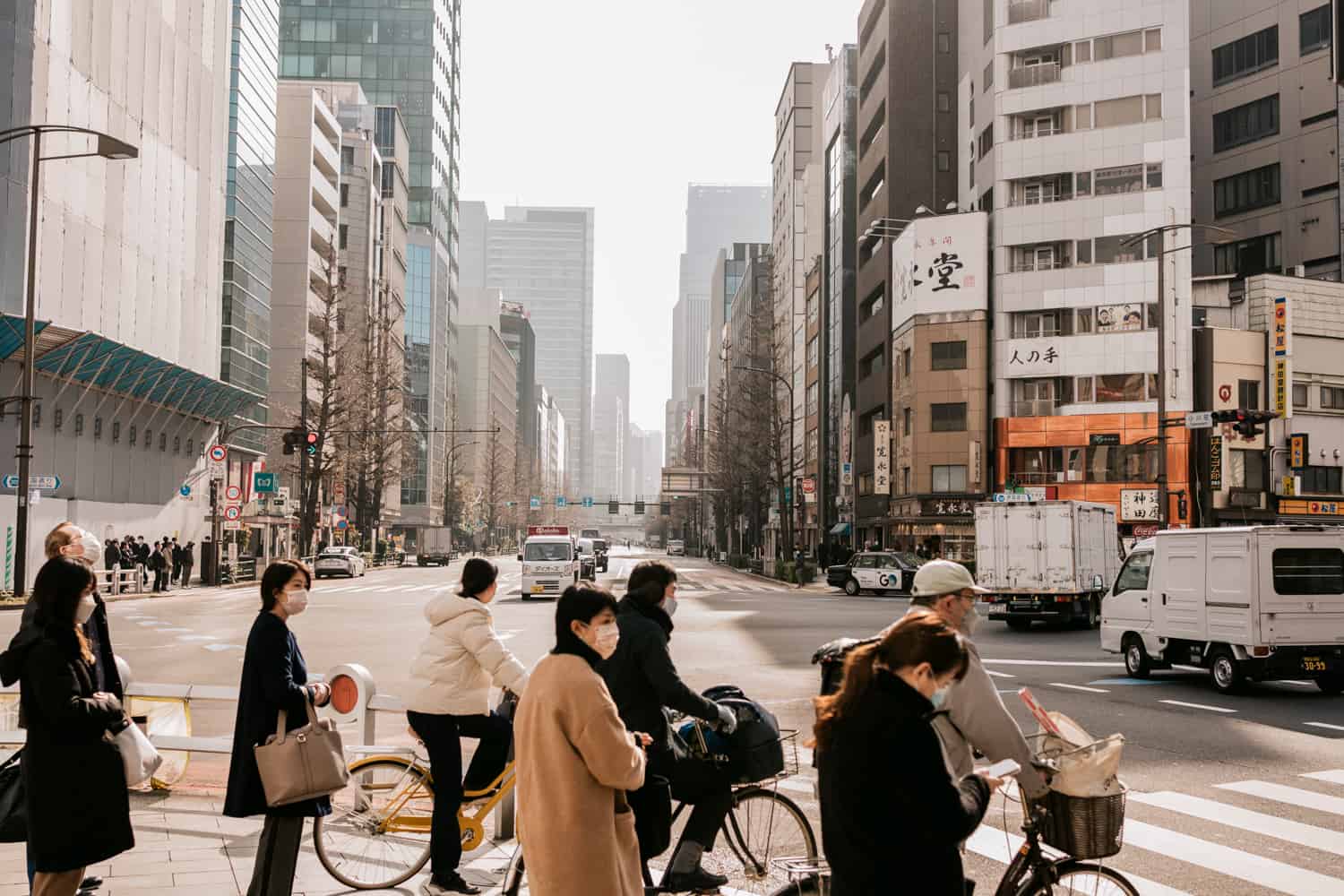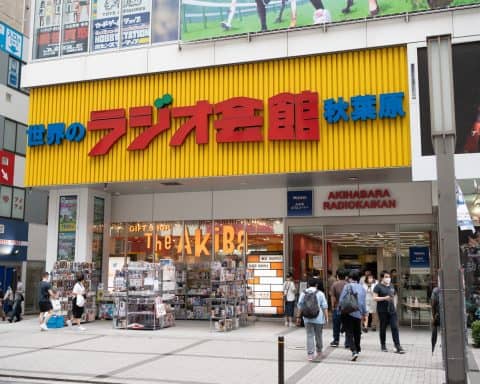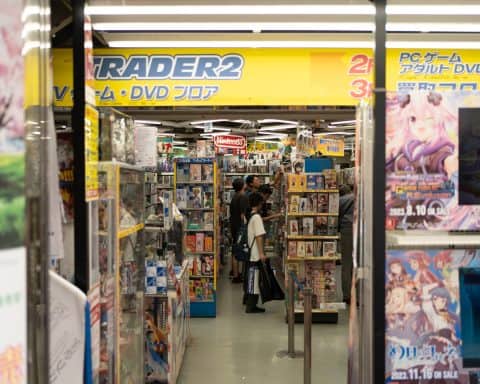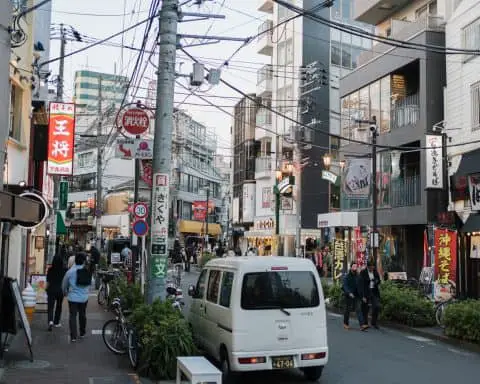You’ve done it! You’ve planned your trip to Japan, saved up, and finally landed in Tokyo. Now what? Depending on the time your flight arrives (or how tired you are), you can often find yourself with a few hours or just short of a day to fill.
Unless you’ve got a fully booked up itinerary that’s planned out to the minute and you’re simply determined to pack as much as possible into your holiday (kind of don’t blame you), it’s relatively important to pace yourself in the early days. This is especially true if your holiday is 3 weeks or longer because all those days of traveling and being on your feet really do add up.
It’s very important not to overdo things at the beginning (trust me I’ve been there and it doesnt end well), but other than that, here are some things to do after arriving in Tokyo.
1. Take it easy
The very first thing you should do after landing in Tokyo is rest. I know that’s not going to be what a lot of you want to hear, but going too hard in the first day or two is a really bad idea.
Japan jetlag can be absolutely brutal if you haven’t prepared for it, but it doesn’t have to be the end of your trip. If you’ve got a tightly packed schedule then this might not be achievable in the same way, but if you don’t have a plan for your trip to Japan (or you’re adaptable over the first day or two) you should try not to travel anymore and chill out.
But what if your itinerary is basically full? Always keep this first day as flexible as possible. Still, want to get out and about to enjoy the best of what Tokyo has to offer? There is still a bunch of relaxing things you can do in the capital, and your body will thank you for taking it easy.
2. Activate your Japan Rail Pass
If you’ve decided to buy the Japan Rail Pass (after the recent price hike, I don’t think it’s worth it), the first thing you’ll need to do when you arrive at Haneda or Narita airport is activate it.
I’ve never used the Japan Rail Pass (nor has anyone I know), but I’m fairly certain you just take it to a JR Office inside the station and then write down the day you want to activate your pass. At that point, they’ll exchange your piece of paper with the real pass.
Use this Japan Rail Pass calculator to see if you could save money during your trip (and how much you could save), just remember that there are a number of lines and trains that the JR Pass doesn’t cover.
3. Grab yourself a Suica or Pasmo card
Even if you have the JR Pass, getting an IC Card like the Suica or Pasmo is one of the first things you should do after landing in Tokyo. It’s a much easier way of getting around Japan than buying tickets, and annoyingly isn’t something I figured out until my second trip over here…
Getting an IC card in Tokyo is really easy, and only costs ¥500 ($3.42) which you can get back when you leave the country. All you have to do is head over the any of the green machines at the station that has the word ‘Ticket’ or ‘Suica’ on them, change the language to English, and follow the on-screen instructions.
Once you’ve done that, you only need to charge them up when you run out of money (using the ‘recharge’ machines). And don’t worry if you get caught out and don’t have enough money once you’ve completed your trip, there are loads of machines where you can top up the difference before tapping out. No big deal!
4. Exchange currency
Japan is absolutely a cash-heavy country, so it’ll be a good idea to have some on hand at all times. If you’re going entirely cash based for the whole of your holiday, it’s time to exchange your currency if you haven’t done that already.
While this is one of the first things you should do after landing in Tokyo, I’d recommend using WISE instead. It’s basically a multi currency card which makes it perfect for peopl who visit more than one country and don’t have time to exchange currencies.
The fees are transparent and low, and I highly reccomend it to people coming over to Japan on holiday.
5. Double check your Airlo SIM (or pockect wifi)
This one will depend on if you’ve decided to stay connected during your trip to Japan or not. If you have, one of the first things you should do after arriving in Tokyo is sort out your connectivity.
On my first trip to Japan I had absoutely nothing (I didn’t even know. that IC cards were a thing. Needless to say, navigating trainstations and everything else was an issue.
On every trip after that, I used my Garmin watch (a little rough and ready, but it worked), and now I’m using a pocket wifi. For you, either Airlo or a pocket WIFI will likely be the best choice.
In terms of options you have to stay connected – some of them you’ll need to deal with as soon as you’ve landed in Tokyo/Japan, and some will be a little before that.
6. Change the time on your watch
If you still have an analog watch, make sure you remember to change the time on it! You’d think this would be obvious but I’ve forgotten to change mine more than a few times…
Here’s a list of the time differences from a number of different countries around the world. If you have digital watches and phones then they should change themselves, but just remember to double-check.
| Country | Time Difference to Japan |
|---|---|
| United States | PST: +17 hours* |
| MST: +16 hours* | |
| CST: +15 hours* | |
| EST: +14 hours* | |
| Canada | PST: +17 hours* |
| MST: +16 hours* | |
| CST: +15 hours* | |
| EST: +14 hours* | |
| United Kingdom | GMT: +9 hours |
| Australia | Sydney: +1 hour |
| Melbourne: +1 hour | |
| Brisbane: same time | |
| New Zealand | Auckland: -3 hours |
| Germany | CET: +8 hours |
| Sweden | CET: +8 hours |
| Norway | CET: +8 hours |
| Denmark | CET: +8 hours |
| Switzerland | CET: +8 hours |
| Netherlands | CET: +8 hours |
*Note: The time differences listed for the United States and Canada are approximate and may vary depending on the location you’re coming from.
7. Freshen up and have a shower at your hotel
I don’t know about you, but I feel like an absolute mess whenever I come off of long-haul flights. Surviving your flight to Japan is one thing, but unless you’re living it up in first class, there’s nothing quite like having a nice refreshing shower afterward.
I find it almost therapeutic. It’s like I can finally detach my mind from the traveling part of the holiday, and then get in the headspace of exploring mode.
You could even pop into the local supermarket or Don Quijote and grab some Japanese Skincare products to help make you feel your absolute best for the rest of the holiday.
Unfortunately, this does depend on the hotel or Hotel or Airbnb you’ve booked, so double-check what your check-in time is because if it’s not early, you won’t be able to check in yet. This is the exact thing that happened to us when we took the night bus to Osaka, we arrived at 5 in the morning and couldn’t check in until 5 in the evening…
If you do end up finding yourself in this position, throw your suitcases and bags in a locker and take a look at these things to do in Tokyo in the morning. Hopefully, that should keep you busy for a while!
8. Buy some snacks and food from the nearest Konbini
Technically you should be doing this at all points on your holiday, but there’s nothing quite like grabbing some fami chiki from Family Mart or a fruit sando from 7-Eleven after landing in Tokyo.
In fact (and this is genuinely not even a lie), I’ve seen multiple people on YOUは何しに日本へ? (a Japanese TV show where people are asked why they came to Japan) who state that the main reason they’ve come to Japan is to eat Konbini food.
Maybe you have slightly different intentions for coming to Japan, but I challenge you to leave the country and not daydream about the convenience, and interesting snack foods you find in a Japanese Konbini!
For instance, I barely ate jelly until I can to Japan. Now I eat it probably once a week in a giant tub with oranges in it. IT’S SO GOOD!
9. Go over your itinerary for the next few days
If you’re anything like me, you’re going to be extremely excited about your holiday to Japan. That’s probably how you’ve found this website I’d imagine, by doing a load of research!
Well, it stands to reason then, that you’ll probably be the type of person who enjoys figuring out all the things they can do during their time in Japan. Not compulsively, but you’re definitely someone who wants to make the most of their time over here at least.
However, the idea here is not to add anything new to it (unless it’s really cool, then I won’t blame you!), but simply a way to double check things and feel prepared. If I were you, I’d try my best to do this inside a local cafe or “Kissaten”.
Why would I choose to do it there, rather than in my hotel?
Well, you’re out and about, but in a fairly relaxed environment for one thing. Make sure it’s one near your hotel so you aren’t traipsing halfway across the capital, though.
Watch the world pass you by, ground yourself in this new country with these new experiences, and pinch yourself when you realize you’re actually not dreaming. You really did make it to Japan!
10. Explore the area close to your hotel
Whatever you decide to do after landing in Tokyo, make sure it’s relatively near to your hotel. Ideally, you wont be getting on any trains after you’ve made it to the area you’re staying at.
even if I havent just landed in Tokyo, this is something I really enjoy doing. Exploring the area around your hotel is bound to bring up a few hidden gems and depending on where you’re staying, is not likely to be an area heavily frequented by tourists.
As I say, that really depends on where you’re staying. When we had 2 days in Hiroshima, we stayed in an Airbnb about 20 minutes bus ride from the city.
Other than being the best Airbnb I’ve stayed at in Japan, the area it was located in (Fuchū) was just a 10 minute walk from an epic gorge that we only found because we explored around that area. It wasnt on our itinerary, but made for a really memorable occasion!
If you’re visiting in Summer, there might even be a festival or two happening in your area. I’ll write a separate blog post about matsuri (Japanese Summer festivals), but they’re well worth visiting if you get the chance!
11. Skip the tourist magnets
I don’t like touristy places at the best of times, but visiting somewhere that’s bound to have a lot of people probably isn’t the best idea if you’re feeling tired from your flight and in need of a rest. For instance, only visit Sensō-ji if your idea of fun is overpriced
To be fair, it’s the oldest temple in Tokyo which is kind of cool, but there are way better places to be exploring as soon as you’ve landed in Tokyo. Of course, there are some places like Shibuya Crossing that you might specifically visit for the crowds in Japan, but the novelty quickly wears off.
To be fair, I recently went to Shibuya sky on the first day with some visiting family members and it was actually a really nice way to start the holiday. That wasn’t one of the first things we did when they landed, but it was still planned for the first day.
12. Check out the toilets
Honestly, this is probably the first thing you’re likely to do after you arrive in Tokyo. After arriving at Narita Airport for the very first time, I needed to go to the toilet even before going through passport control.
Needless to say, the clean, slightly futuristic TOTO Toilet seats are going to be one of the things you miss most in Japan when you leave. And I encourage you to just press all the buttons and see what they do as well – no fear!
Some of the more upmarket ones have deodorizers, play privacy music (usually running water sounds), dryers, and other similar things.
It may seem strange to suggest that you check out the toilets straight after landing in Tokyo, but they’re something that never disappoints. You always know the ones at the airport are going to be decent, and it’s like a guaranteed positive note to start your holiday off with.
It’s the first country I’ve been to where 95% of the toilets are incredibly clean which means you don’t have to worry about using them when you’re out and about! Yay for clean toilets!








